Herbs are often the first plants new gardeners start with because they are easy to grow. In addition to being easy to take care of, herbs add beauty to your space, deter unwanted garden pests, and spice up your food and drinks. Now that you have a few established plants, perhaps you are thinking of expanding your herb garden. It’s easier (and less expensive) than you might think! Follow these simple steps to propagate herbs.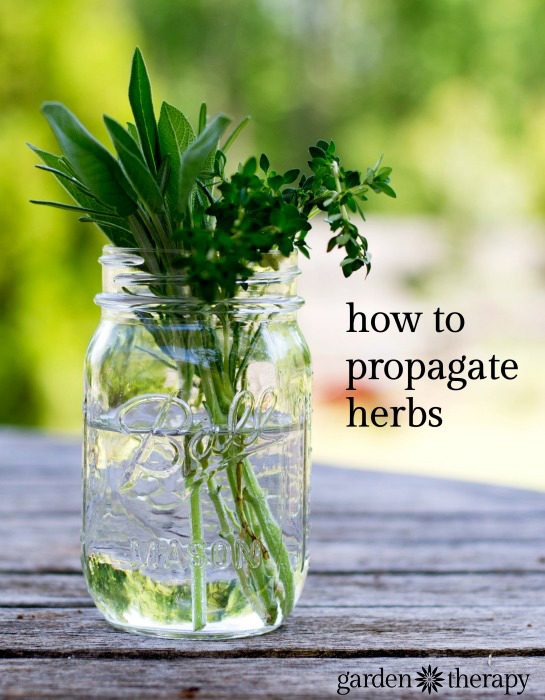
No need to head to the garden center and drop a bunch of money on new herb plants; herbs are easy to propagate.
What is Propagation?
Propagation is creating new plants from a variety of sources: seeds, cuttings, bulbs, and other plant parts. There are three main ways to propagate herbs: through seeds, cuttings, and division. Most plants can be started by all three methods. For herbs, the quickest way to get more plants is from stem cuttings.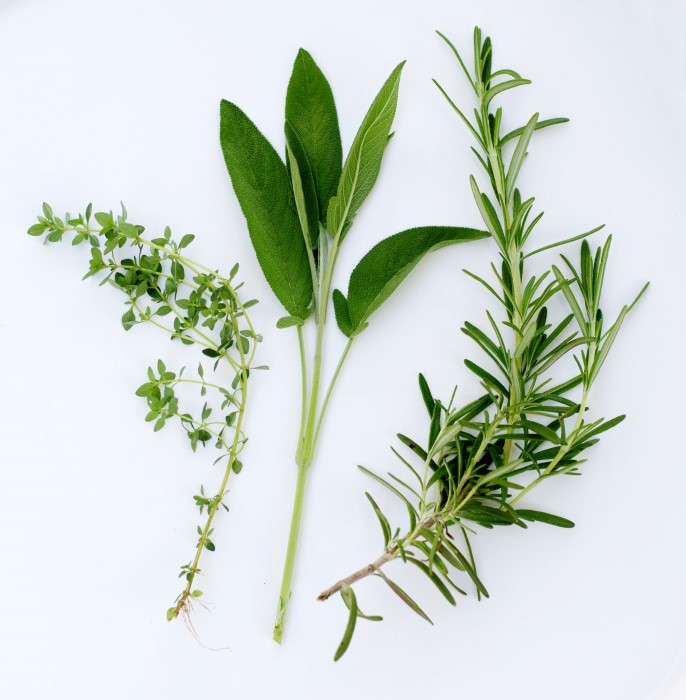
When to Propagate Herbs
The best time to take a cutting from your plant is during its active growth season; typically between spring and fall. Take cuttings of herbs that are not actively flowering.
If there are a few flowers on the stem, you’ll need to remove them.
Where and How to Cut
On any given stem, there will be a “softwood” section and a “hardwood” section. The softwood will be lighter in color and have a flexible stem. This is the new growth. New growth will root out more easily than old growth.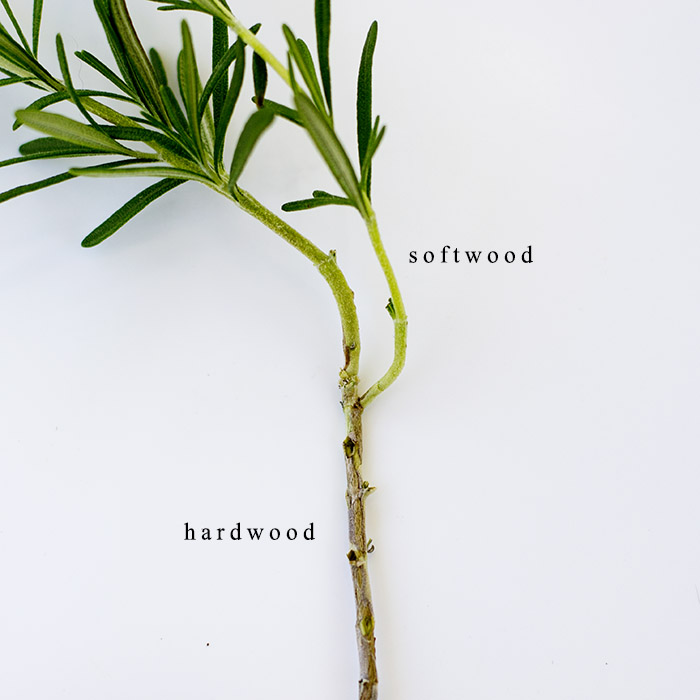
Try to take your cuttings in the morning as this will put less stress on the herbs. Disinfect your cutting tools with rubbing alcohol before and after each cut to prevent the spread of disease. Make the cut under a node (where the leaves join the stem). Take a 4-6 inch cutting. Pinch off the leaves on the bottom 2 inches of your cutting. This is where the new roots will emerge.
Root Out the Cuttings
After you have made the cuttings, you can root them out in a glass of water or plant them in a growing medium. For both methods, you will need to cover the cuttings with plastic to help them retain moisture.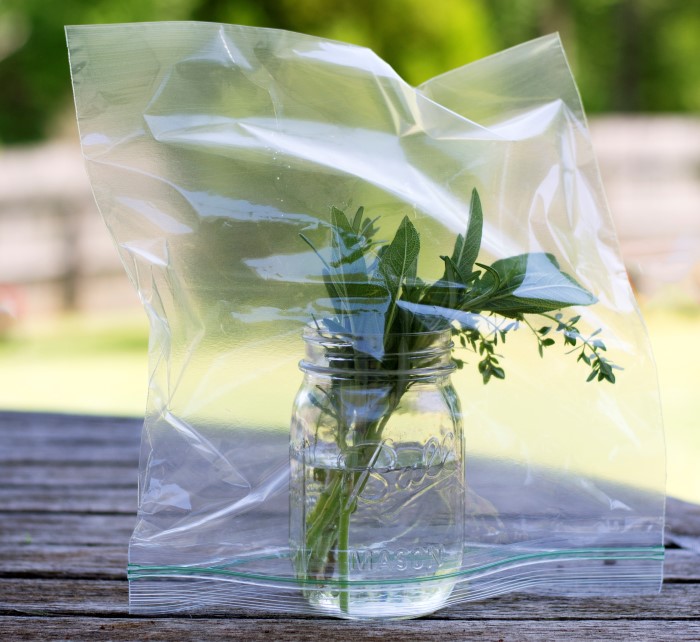
In a Glass of Water:
Place the cuttings in a glass and fill it with enough water to cover the stems. No leaves should be in the water. Cover the jar of cuttings with a plastic zip bag and set it in a bright area. The cuttings should develop enough roots in about 3-4 weeks. At this point, you can pot them up.
In Growing Medium:
You can also plant your cuttings directly in pots with growing medium. Use a soilless growing medium (the same kind you use for seed starting) for the cuttings. To speed up the rooting process, you can dip the stems in rooting hormone before you pot them up. Once potted, water the cuttings and cover with a plastic zip bag. The cuttings will root in 3-4 weeks.
After Care
The cuttings need to remain moist, but not too wet. Every couple of days, remove the plastic cover and turn it inside out to remove the condensation. Water only if the soil is dry or the water in the glass jar is below the stems. Keep the new cuttings away from heat and direct sunlight. The plastic acts as a mini-greenhouse for the herbs; you do not want them to get too warm or they’ll cook. Once the herbs have rooted, you can transfer them to your garden or to a bigger pot.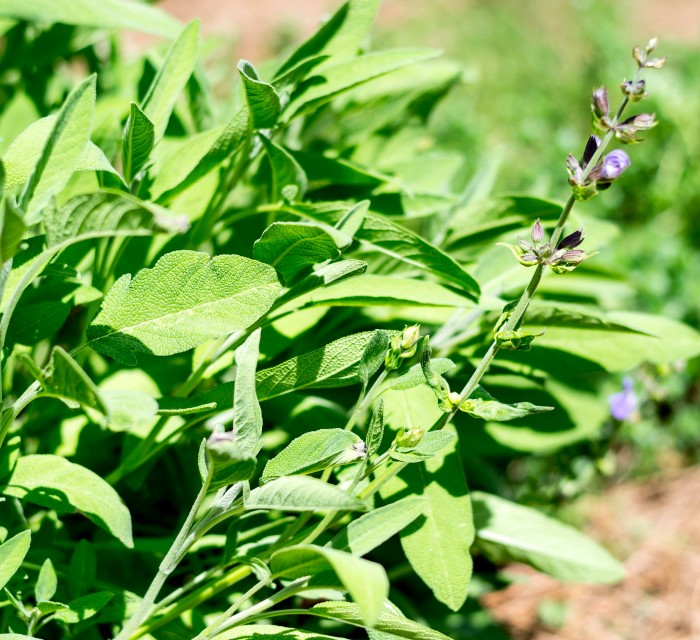
Pin it!
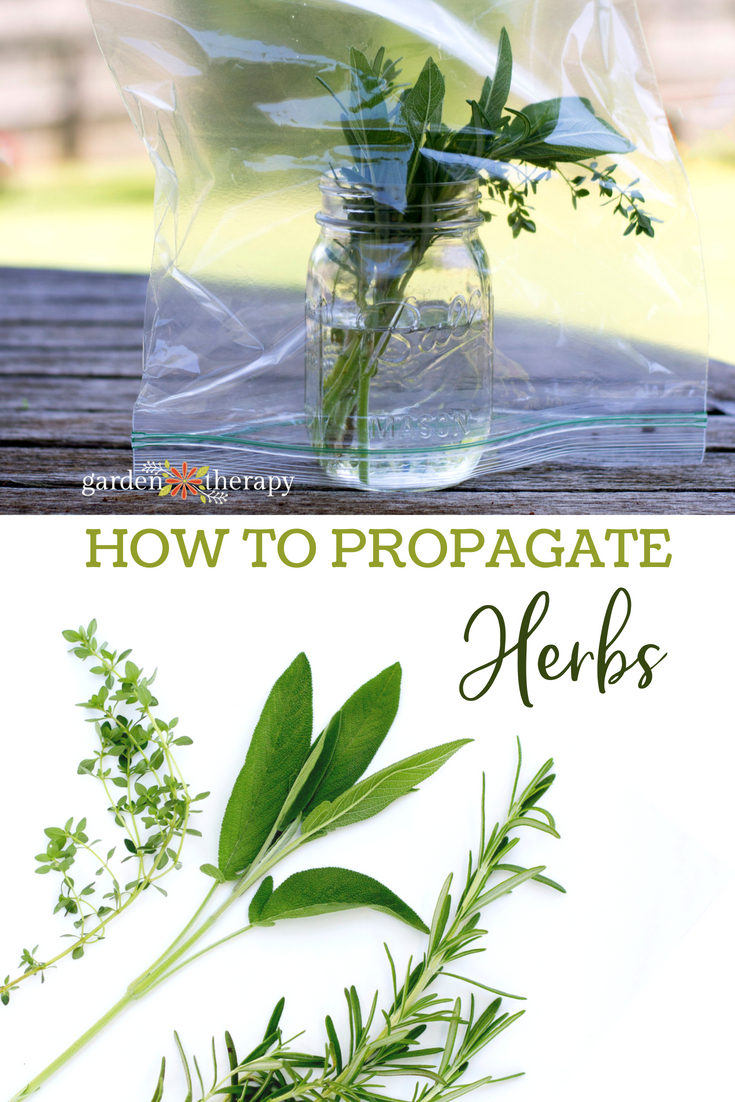
About the Author
Debbie Wolfe is a mom of two rambunctious boys, wife, and work-at-home mom from Georgia. In her free time (when there is such a thing), she is in the garden or hidden away reading the latest post-apocalyptic sci-fi drama! As for interests, Debbie is an obsessive crafter, home chef, and gardener. She is a freelance writer, blogger, and is a co-author and photographer behind the garden blog The Prudent Garden: a collection of tips, crafts, and articles that highlight home gardening.
Now that you know how to propagate herbs, check out these posts for creative ideas on what to do with them all.
- Gartending: Sweet Herbs for the Cocktail Hour Garden
- Beyond the Spice Rack: Preserving Herbs in Creative Ways
- Growing Basil from Cuttings
- 43 Healthy Herbs for Hens
- Grow an Herbal Tea Garden
- 16 Recipes to Use and Preserve Fresh Basil
- Edible Edges: Landscaping That’s Good Enough to Eat!
- 3 Ways to Make Herbal Oils for Natural Beauty Recipes
- How to Grow Herbs Indoors (Successfully)
- Gorgeous Bouquets from the Herb Garden


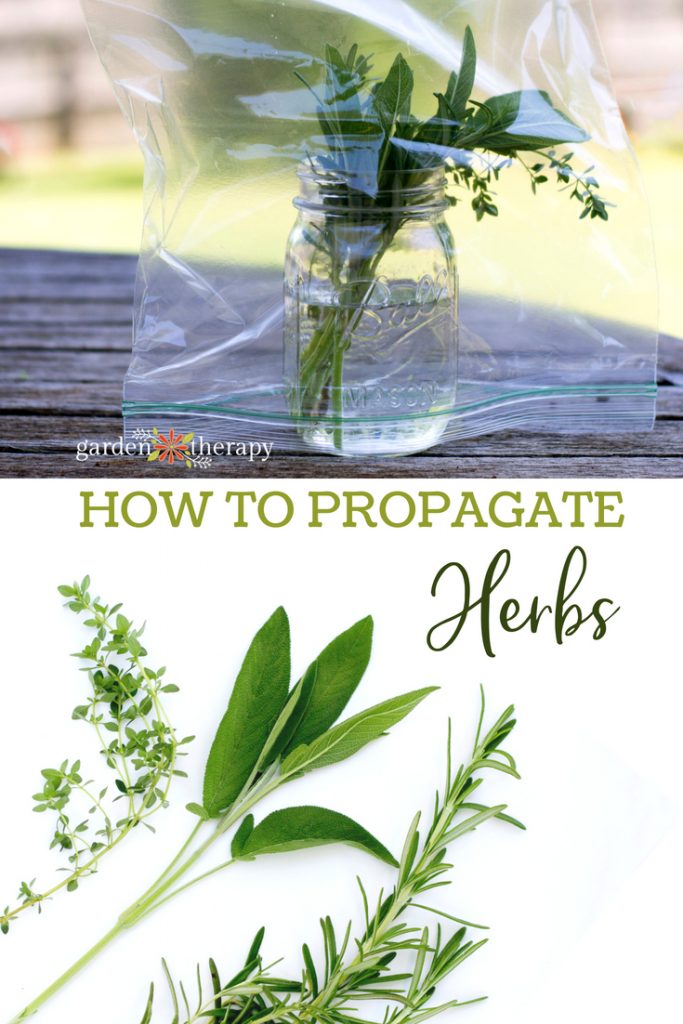



Thank you for your work on this blog it is written very well and the pictures really help a person to understand what is meant. Thank again for being so precise.
Do have any advice for someone using a small indoor hydroponic device on how to use the unit to propagate more herb plants of the originals?
Keek up the good work